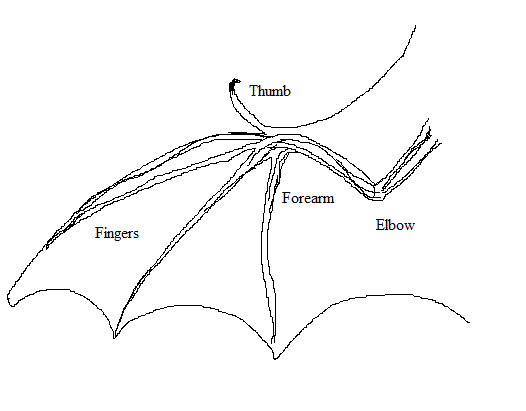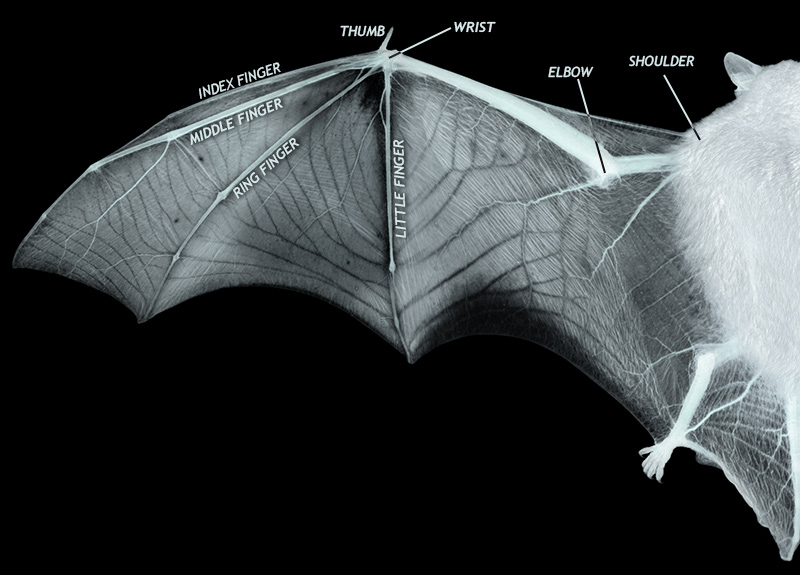General Structure of the Wing of Bats
The Greek name Chiroptera means hand wing. Hill and Smith (1984) described the features of the wings of bats as follows: The skeletal features as well as the soft structures of the wing of a bat can be compared to the arm and hand of a human; The humerus articulates with the scapula or the shoulder blade; Muscles that bind to humerus are the same but more powerful than humans. In bats, the ulna is reduced to a thread-like structure and fused with an elongated radius.
Figure 1
Structure of Bat Wing

The radius has lost its ability to rotate since it needs to withstand the immense air pressure during flight. The wrist resembles that of other mammals, except for a reduced ulna and in the absence of rotation. The carpal bones show movement in the forward and backward plane. The thumb of the bat is the least modified of all digits, it shows more forward movement and bears a strong claw at the tip. The thumb shows high mobility, and its role includes moving, handling food, and in fighting. The terminal claw is absent on the second finger in insectivorous bats. The third, fourth and fifth fingers have similar structures, and the metacarpal is the largest element in each finger. The elastic and flexible wing of the bat is an extension of the skin membrane and is attached to the body along the side. Tails of bats run to the end of the membrane or beyond that. The flight membranes are tough and elastic and can resist tearing and puncture when hit by sharp objects. Microscopic examinations of the flight membranes reveal many transparent hairs, and the wings are richly supplied with blood vessels to nourish the flight muscles. Vascularization also helps in the removal of excess carbon dioxide that results from the intensive muscular activity during flight. Oxygen is not exchanged through wing membranes since the wing surfaces are dry.
Reference
Hill, J. E., & Smith, J. D. (1984). Bats: A natural history.





